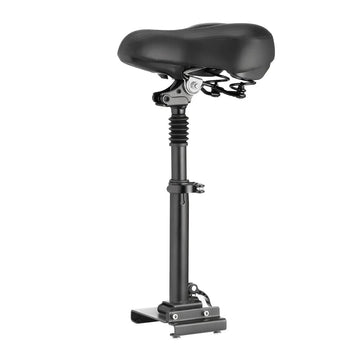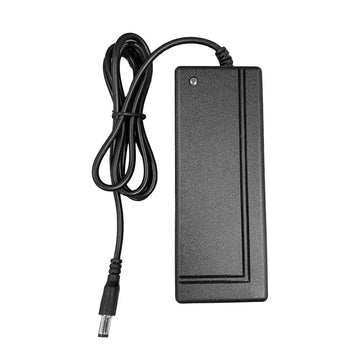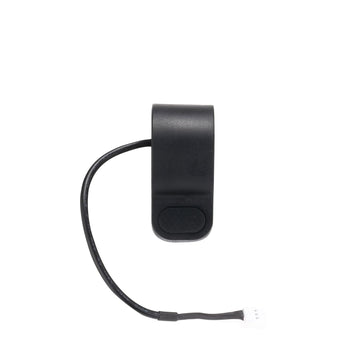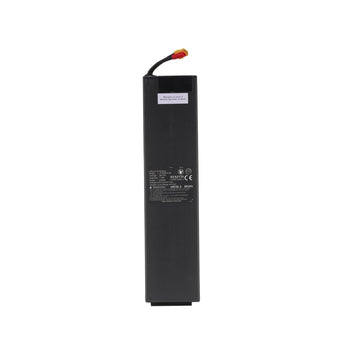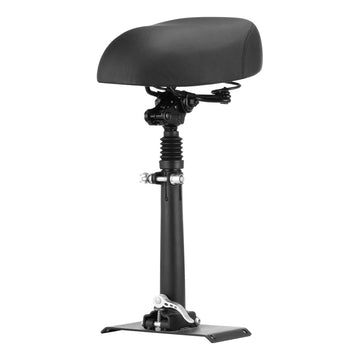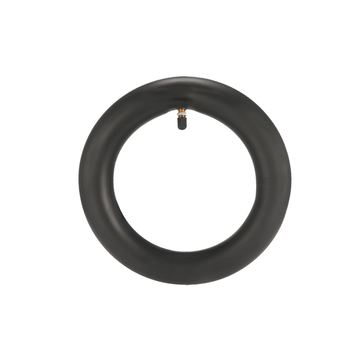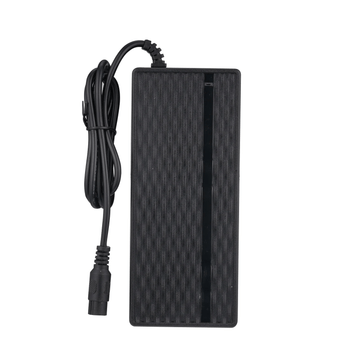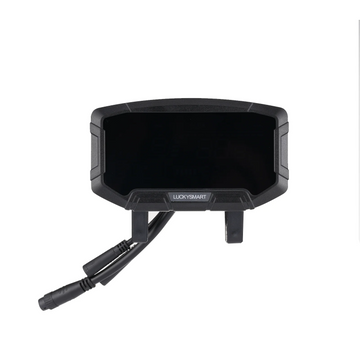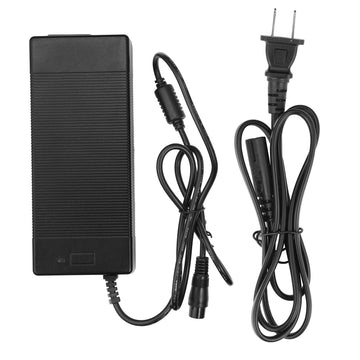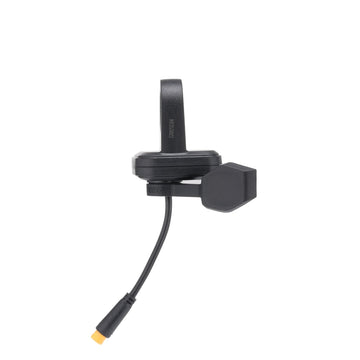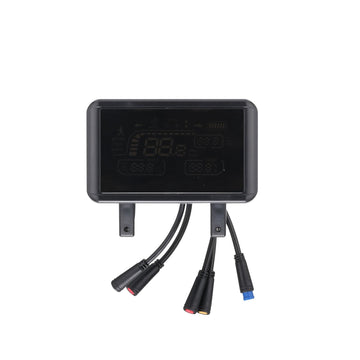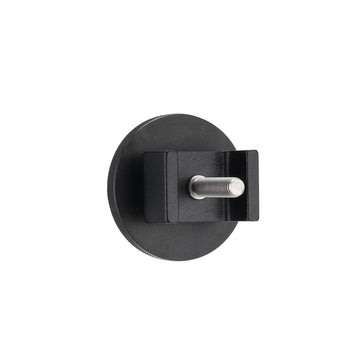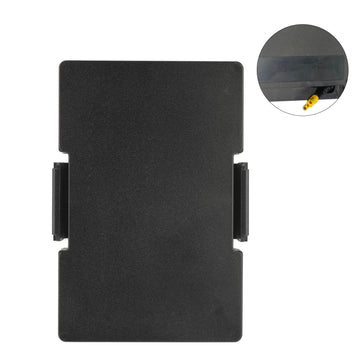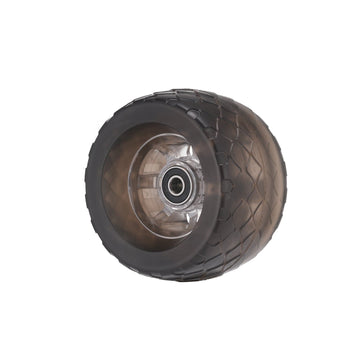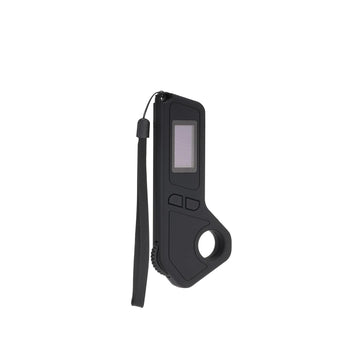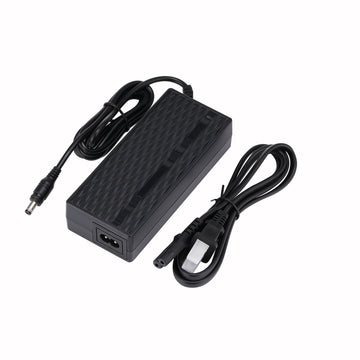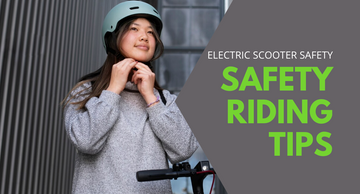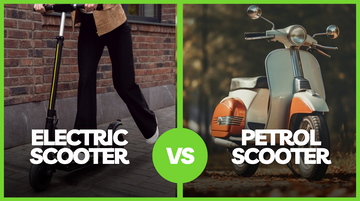
Electric bikes, also known as eBikes, are changing the game for cyclists, and it's all thanks to something called pedal assist. This nifty feature gives you a helping hand as you pedal, making your ride feel lighter and less tiring. Imagine pedaling up a hill or cruising on a long path and feeling like you've got a little push every time you turn the pedals. That's what pedal assist does – it takes away some of the effort without taking away the fun of biking.
Knowing how pedal assist works might make you think about getting an eBike for yourself. It's like having a secret power-up that kicks in when you need it, helping you go faster or get through tough spots without breaking a sweat. eBikes with pedal assist are not just cool gadgets; they make biking doable for more people, whether you're trying to get fit, get to work without a car, or just want to enjoy a ride without feeling worn out afterward.
What are Pedal Assist Systems?
If you're new to the world of electric bikes, you might be wondering what a pedal assist system is. In short, a pedal assist system is a feature that helps to power your bike using a motor that is activated when you pedal. This means that you can ride further, faster, and with less effort than you would be able to on a traditional bike.

How Pedal Assist Works
Pedal assist systems work by using a sensor to detect when you start pedaling. Once the sensor detects that you're pedaling, it sends a signal to the bike's control unit, which activates the motor. The motor then provides power to the bike's wheels, making it easier for you to pedal.
There are two main types of sensors used in pedal assist systems: cadence sensors and torque sensors. Cadence sensors detect how fast you're pedaling, while torque sensors detect how hard you're pedaling. Both types of sensors are effective, but torque sensors tend to be more accurate and responsive.
Different Types of Pedal Assist
There are several different types of pedal assist systems available, each with its own set of features. Some bikes have multiple levels of assist mode, while others have a single level. Some bikes also have a throttle system, which allows you to control the motor directly without pedaling.
The most common type of pedal assist system is the PAS (pedal assist system), which uses a cadence sensor to detect when you're pedaling. This type of system is effective and easy to use, but it can be less responsive than other types of systems.
Another type of pedal assist system is the torque pedal assist system, which uses a torque sensor to detect how hard you're pedaling. This type of system is more responsive than a cadence-based system, but it can also be more expensive.
Pedal Assist vs. Throttle System
While pedal assist systems are the most common type of electric bike system, some bikes also have a throttle system. Throttle systems allow you to control the motor directly, without pedaling. This can be useful if you need an extra boost of power, or if you're riding in a hilly area.
However, throttle systems can also be less efficient than pedal assist systems, as they tend to use more power. Additionally, some areas have regulations that limit the use of throttle systems on electric bikes.
Components of Pedal Assist E-Bikes
When it comes to pedal assist e-bikes, there are several components that work together to provide you with an effortless and enjoyable ride. Let's take a closer look at the key components of a pedal assist e-bike.
Motor and Power
The motor is the heart of the e-bike, and it's what provides the power to assist you as you pedal. There are two main types of motors: hub motors and mid-drive motors. Hub motors are located in the wheel hub, while mid-drive motors are located near the pedals. Both types of motors have their advantages and disadvantages, and the choice between them largely depends on your riding style and preferences.
The power of the motor is measured in watts, and it determines how much assistance you'll get as you pedal. Higher wattage motors provide more power, which means you'll be able to go faster and tackle steeper hills with ease.
Battery and Range
The battery is what powers the motor, and it's one of the most important components of an e-bike. The battery capacity is measured in watt-hours (Wh), and it determines how far you can go on a single charge. The higher the watt-hour rating, the longer the battery will last.
The range of an e-bike depends on several factors, including the battery capacity, the power of the motor, and the terrain you're riding on. Generally, you can expect to get anywhere from 20 to 60 miles on a single charge, depending on these factors.
Sensors and Controllers
Sensors and controllers are what make the pedal assist system work. The sensors detect how fast you're pedaling and how much force you're applying to the pedals, and they send this information to the controller. The controller then adjusts the power output of the motor to provide the right amount of assistance.
There are two main types of sensors: cadence sensors and torque sensors. Cadence sensors measure how fast you're pedaling, while torque sensors measure how much force you're applying to the pedals. Torque sensors are generally considered to be more accurate and responsive than cadence sensors.
Display and Settings
The display is where you can see information about your ride, such as your speed, distance traveled, and battery life. Some displays also allow you to adjust the pedal assist level, which determines how much assistance the motor provides. Most e-bikes come with several pedal assist levels, ranging from low to high.
In addition to the pedal assist level, you can also adjust other settings, such as the maximum speed and the level of regenerative braking. Regenerative braking is a feature that allows the motor to slow down the bike and recharge the battery at the same time.
Explore the iSinwheel collection of pedal-assist electric bikes here.
Benefits of Pedal Assist E-Bikes
Pedal assist e-bikes offer numerous benefits that make them an attractive option for a wide range of riders. Whether you're looking to enhance your riding experience, get a great workout, or make your daily commute more accessible, a pedal assist e-bike can help you achieve your goals.
Enhanced Riding Experience
One of the primary benefits of a pedal assist e-bike is the enhanced riding experience it provides. With the help of the motor, you can ride faster and farther than you would on a traditional bike, without expending as much energy. This means you can tackle longer, more challenging rides with ease, and enjoy the scenery without worrying about getting too tired.
Fitness and Workout Advantages
Pedal assist e-bikes also offer numerous fitness and workout advantages. Unlike traditional bikes, which require you to do all the work, pedal assist e-bikes allow you to choose the level of assistance you need. This means you can get a great workout without overexerting yourself, making them an excellent option for older adults or recreational riders.
Commuting and Accessibility
Another advantage of pedal assist e-bikes is their accessibility. With the help of the motor, you can tackle hills and headwinds with ease, making your daily commute more manageable. Plus, since you don't have to worry about getting too sweaty, you can arrive at your destination feeling fresh and ready to tackle the day.
Performance and Usage
Assistance Levels and Control
Pedal-assist eBikes come with different assistance levels, which can be adjusted according to your needs. The assistance levels refer to the amount of power the motor provides when you pedal. Most eBikes come with at least three levels of assistance, but some models offer up to five or six levels. You can adjust the assistance level by using the controls on the handlebars. The higher the assistance level, the more power the motor provides, and the easier it is to pedal.
Handling Hills and Terrain
One of the biggest advantages of a pedal-assist eBike is that it makes it easier to handle hills and rough terrain. When you encounter a hill, you can increase the assistance level to make it easier to pedal. The motor will provide more power, so you won't have to exert as much effort to climb the hill. Similarly, when you ride on rough terrain, the motor can provide extra power to help you maintain your speed and balance.
Adjusting to Rider's Effort
Pedal-assist eBikes are designed to adjust to the rider's effort. The motor provides power based on the force applied to the pedals. This means that the harder you pedal, the more power the motor provides. If you want to get a good workout, you can pedal harder and rely less on the motor. If you want to conserve your energy, you can pedal lightly and let the motor do most of the work.
Maintenance and Longevity
Electric bikes are an excellent investment in terms of convenience, efficiency, and environmental-friendliness, but like any other vehicle, they require proper maintenance to ensure maximum performance and longevity. Here are some tips to help you keep your pedal-assist e-bike in top condition:
Battery Care and Management
The battery is the most crucial component of an electric bike, and it is vital to ensure that it is well-maintained to maximize its lifespan. Here are some tips to help you take care of your battery:
- Keep your battery charged: Always keep your battery charged to at least 50% if you are not using your bike for an extended period.
- Store your battery correctly: Store your battery in a cool, dry place, away from direct sunlight and extreme temperatures.
- Charge your battery correctly: Always use the charger that came with your bike to charge your battery. Overcharging or undercharging your battery can damage it.
- Monitor your battery: Keep an eye on your battery's charge level and replace it when it starts to lose its capacity.
Motor and Sensor Maintenance
The motor and sensor are the two most critical components of your e-bike's pedal-assist system. Here are some tips to help you maintain them:
- Keep your motor clean: Clean your motor regularly to prevent dust and debris from accumulating on it. Use a soft cloth to wipe it down gently.
- Check your sensor: Make sure that your sensor is working correctly by testing it regularly. If you notice any issues, contact a professional mechanic to help you fix it.
Frame and Component Care
The frame and other components of your bike are essential for its overall performance and longevity. Here are some tips to help you take care of them:
- Keep your bike clean: Clean your bike regularly to prevent dirt and grime from building up on it. Use a soft cloth and a gentle cleaner to wipe it down.
- Check your brakes: Make sure that your brakes are working correctly by testing them regularly. If you notice any issues, contact a professional mechanic to help you fix them.
- Lubricate your chain: Keep your chain lubricated to prevent it from rusting and breaking. Use a high-quality lubricant to keep it running smoothly.
Choosing the Right Pedal Assist E-Bike
When choosing the right pedal assist e-bike, there are a few key factors to consider. In this section, we'll discuss some of the most important things to keep in mind when selecting your new e-bike.
Considering Power and Range
One of the most important factors to consider when choosing a pedal assist e-bike is the power and range of the bike's motor. The power of an e-bike's motor is typically measured in watts, and the range is the distance the bike can travel on a single charge. The more powerful the motor, the more assistance you'll get when pedaling, and the longer the range, the further you'll be able to travel on a single charge.
Evaluating Bike Classes
Another important consideration when choosing a pedal assist e-bike is the bike's class. E-bikes are typically divided into three classes based on their level of assistance and maximum speed. Class 1 e-bikes provide assistance up to 20 mph, while Class 2 e-bikes provide assistance up to 28 mph. Class 3 e-bikes provide assistance up to 28 mph but require the rider to pedal in order to activate the motor.
Customization and DIY Options
Finally, if you like to customize and tinker with your gear, you may want to look for an e-bike that offers plenty of customization and DIY options. Some e-bikes come with modular components that can be easily swapped out or upgraded, while others are designed to be easily modified by the user. If you're interested in building your own e-bike from scratch, there are plenty of kits and resources available to help you get started.
Real-World Applications
Pedal-assist electric bikes, or e-bikes, have become increasingly popular in recent years. They offer a range of benefits over traditional bicycles, including extended range, greater speed, and easier hill climbing. In this section, we will explore some of the real-world applications of pedal-assist e-bikes.
Urban Commuting
One of the most common uses for pedal-assist e-bikes is urban commuting. If you live in a city, you know how frustrating it can be to get stuck in traffic or wait for public transportation. With an e-bike, you can easily navigate through traffic and arrive at your destination faster.
Pedal-assist e-bikes are also ideal for commuting because they allow you to arrive at work without breaking a sweat. You can choose the level of assistance you need, so you can get a light workout in without getting too tired.
Off-Road Adventures
Pedal-assist e-bikes are also great for off-road adventures. Whether you are exploring mountain trails or cruising through the countryside, an e-bike can help you tackle even the toughest terrain.
With a pedal-assist e-bike, you can climb steep hills and navigate rocky terrain with ease. You can also travel further and faster than you would on a traditional bike, so you can explore more of the great outdoors.
Leisure and Recreation
Finally, pedal-assist e-bikes are perfect for leisure and recreation. Whether you want to take a leisurely ride through the park or go on a scenic tour of your city, an e-bike can make your ride more enjoyable.
With a pedal-assist e-bike, you can ride for longer distances and explore more of your surroundings. You can also choose the level of assistance you need, so you can get a light workout in or take it easy and enjoy the ride.
Conclusion
Pedal assist eBikes offer the perfect balance between physical exertion and electric support, making them an excellent choice for anyone looking to enhance their cycling experience. Whether you're commuting, exploring, or simply enjoying a leisurely ride, the added boost can turn a daunting journey into an enjoyable adventure. The beauty of these bikes lies in their ability to adapt to your needs, providing assistance when necessary while still giving you a workout, if that's what you're after. They're not just a passing fad; they represent a movement towards more sustainable and accessible modes of transportation.
If you're ready to experience the joys and benefits of pedal assist cycling, explore our collection of pedal assist electric bikes. Find the perfect model that aligns with your lifestyle and get ready to transform your rides into something truly special.
Discover your ideal pedal assist electric bike here.
Frequently Asked Questions
What's better, pedal assist or throttle ebike?
The choice between a pedal assist and a throttle ebike depends on your preference and riding style. Pedal assist ebikes provide assistance to your pedaling, making it feel like you have superhuman strength. On the other hand, throttle ebikes allow you to ride without pedaling, similar to a motorcycle. If you want a more natural biking experience, go for a pedal assist ebike. However, if you want a more effortless ride, a throttle ebike is the way to go.
Does pedal assist drain the battery?
Yes, pedal assist does drain the battery. The more assistance you require, the more battery power the bike will use. However, the amount of battery drain depends on the level of assistance you choose and the terrain you're riding on. Riding on flat terrain with a low assistance level will use less battery power compared to riding uphill with a high assistance level.
Do pedal assist bikes charge when you pedal?
No, pedal assist bikes do not charge when you pedal. The battery is charged by plugging it into an electrical outlet. However, some bikes do have regenerative braking, which converts some of the energy used during braking into electrical energy and sends it back to the battery.
Can you ride an electric bike without pedaling?
Yes, you can ride an electric bike without pedaling if it has a throttle. However, some countries and states have different laws regarding throttle ebikes and may require a license or registration.
Can you turn off pedal assist on an ebike?
Yes, you can turn off pedal assist on an ebike. Most ebikes have a control panel or display that allows you to adjust the level of assistance or turn it off completely.
Can you make a pedal assist bike go faster?
The maximum speed of a pedal assist bike is limited by law to 20mph in the US. However, some bikes have a "turbo" mode that provides maximum assistance and can make the bike go faster. Riding a bike above the legal speed limit can result in fines or legal consequences.




























